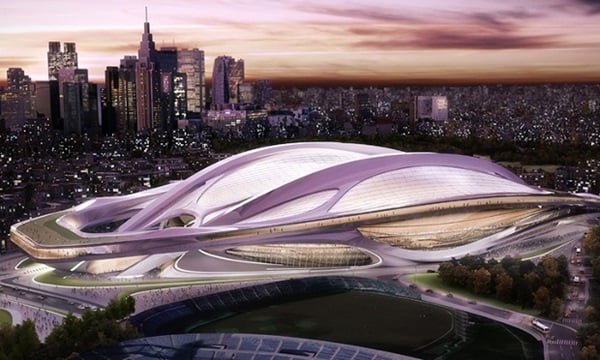
Japanese Prime Minister Shinzo Abe has scrapped plans for Zaha Hadid‘s 2020 Tokyo Olympics stadium, which has been likened to a bike helmet. He places the blame on mounting costs, according to The Guardian.
The price tag has soared to $2 billion dollars—three times the amount of London’s 2012 Olympics stadium and Beijing’s 2008 facility, designed by artist Ai Weiwei and known as the Bird’s Nest, according to the Financial Times.
“We have decided to go back to the start on the Tokyo Olympics-Paralympics stadium plan, and start over from zero,” Abe told reporters after meeting with Yoshiro Mori, chairman of the Tokyo 2020 organizing committee.
High costs have sparked public outrage, and a political battle has erupted between the central government and Yoichi Masuzoe, Tokyo’s governor, over what expenditures would be covered, respectively, by the country and the capital.
Zaha Hadid.
Photo: via Wales Online.
Hadid’s project director, Jim Heverin, says the fault doesn’t lie with the studio. “It is not the case that the recently reported cost increases are due to the design, which uses standard materials and techniques well within the capability of Japanese contractors, and meets the budget set by the Japan Sports Council,” he told the Guardian. “The real challenge for the stadium has been agreeing [on] an acceptable construction cost against the backdrop of steep annual increases in construction costs in Tokyo and a fixed deadline.”
Last summer, Pritzker Prize-winning architect Fumihiko Maki, who publicly decried Hadid’s design, organized a petition that calls for a reconsideration of the stadium’s design and “greener, more democratic” options. The petition is supported by a number of leading Japanese architects such as Toyo Ito, Kengo Kuma, and Sou Fujimoto.